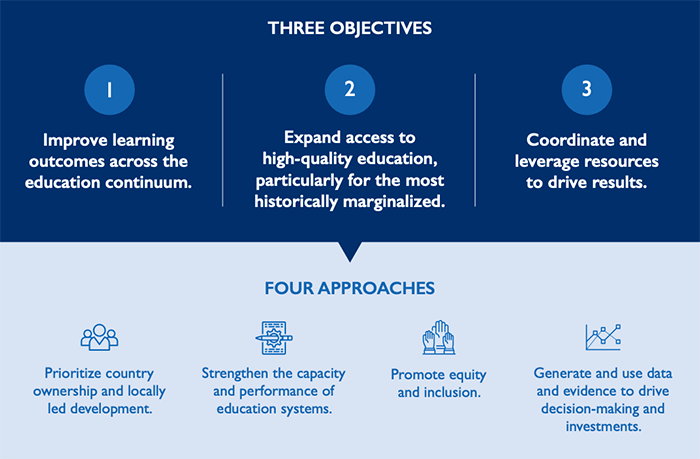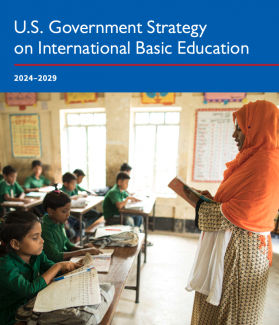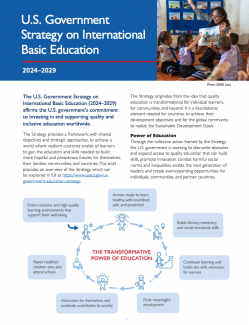The U.S. Government Strategy on International Basic Education (2024–2029) affirms the U.S. government’s commitment to investing in and supporting quality and inclusive education worldwide. It provides a framework, with shared objectives and strategic approaches, to achieve a world where resilient countries enable all learners to gain the education and skills needed to build more hopeful and prosperous futures for themselves, their families, communities, and countries.
Despite challenges from the COVID-19 pandemic and ongoing conflicts and crises disrupting education, U.S. government programs increased the number of learners who obtain foundational reading skills and meet country benchmarks in 15 countries during and after the pandemic emergency. Over the course of the previous 2019–2023 USG Strategy on International Basic Education, the U.S. government reached more than 34 million learners annually through international basic education programs.
The U.S. government will continue building on these efforts through the 2024–2029 Strategy, which retains the U.S. government’s core focus on increasing learning outcomes and expanding access to quality education, particularly for the most historically marginalized, from the 2019–2023 Strategy. This update integrates lessons learned from the COVID-19 pandemic, including strengthening education systems to be more inclusive and resilient, and focuses on three shared objectives that can be achieved using four strategic approaches.



